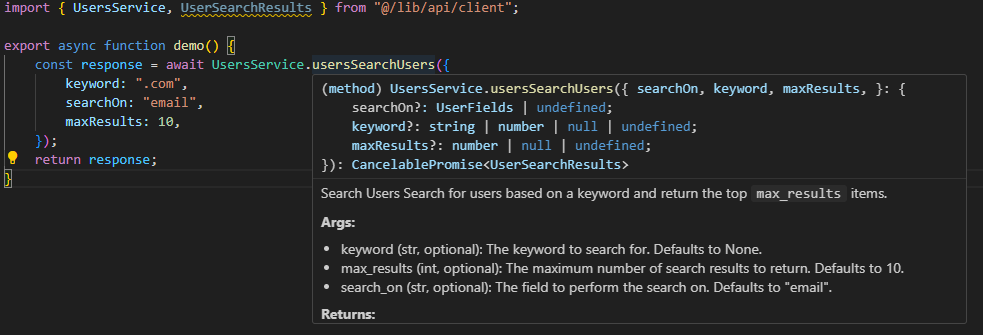Introduction
The frontend uses the latest version of Next.js and TypeScript; it is configured using the latest app router. You can run the frontend only by running thepnpm run dev command from a terminal within the web directory. Alternatively, you can run the entire application by running pnpm run dev from the root directory.
App structure
The app root directory is structured as follows:App
| Item | Description |
|---|---|
| globals.css | Tailwind global config. Uses a generated theme from ShadCN UI themes |
| layout.tsx | App layout |
| page.tsx | Landing page |
Components
| Item | Description |
|---|---|
| layouts | The dashboard layout is stored which wraps the application {children} in root/app/layout.tsx |
| theme | The ThemeProvider component(s) that wrap the application. |
| ui | Where ShadCN components are stored upon being generated. Configured by the components.json located in the frontend root |
| *.tsx | Components used within the application |
Lib
| Item | Description |
|---|---|
| api | The output generated by the openapi npm package. Configured in the package.json task named generate-client |
| config | Stores site config. Currently contains the setup for sidebar navigation |
| twConfig.ts | Tailwind colour config exported to an accessible Object. Used for assigning theme-aware colours in charts |
| utils.ts | ShadCN utils |
TypeScript from FastAPI
As FastAPI is based on the OpenAPI specification, you get automatic compatibility with many tools, including the automatic API docs (provided by Swagger UI). One particular advantage that is not necessarily obvious is that you can generate clients (sometimes called SDKs ) for your API, for many different programming languages.For a more detailed explanation, see the official FastAPI documentation
Why generate TypeScript?
Generating a TypeScript client for your FastAPI backend is a great way to ensure that your frontend and backend are always in sync. It is also a way to provide type hinting while writing your frontend code without needing a permanent reference to the API, or re-creating the schema using something like Zod.
Type hinting from the generated API client
How to generate TypeScript
1
Configure and run generate-client task
There are two generate-client tasks configured in the The
The
package.json:generate-client task is set to run off the production OpenAPI schema.The
generate-client:dev task is set to use the localhost OpenAPI schema. This is useful for development, as it will use the latest schema from the backend.Ensure your production API URL is configured, or that your local API URL is correct, and then run the relevant task.2
Update your root layout
A key file to be aware of is the The problem with this is that we would want to differentiate between which API is being used. When the TypeScript is generated, the given OpenAPI URL is used as the base URL for the API.
This is not ideal for production, as you would want to use the production API URL, and vice versa in development.You can override this by adding the following to your root
OpenAPI.ts which is generated in the lib/api/client/core directory. This file has the main configuration for the API connection as below:lib/api/client/core/OpenAPI.ts
layout.tsx file:layout.tsx
Using the generated API
Once you have generated your TypeScript interface to your API, you can use it in your frontend code. In its simplest form, you can import the generated API and use it as below:components/search-users.tsx file, as part of the form’s onSubmit function:
UserSearchResults type which is used to set the state of the search results:
Important considerations
- If you make changes to your API, you will need to re-generate the TypeScript interface.
- Re-generating this interface will overwrite the existing files. If you want to modify anything (e.g.
api/client/core/OpenAPI.ts) and have it persist, do this outside of the generated files. You can see this in action in theroot/app/layout.tsxfile.

